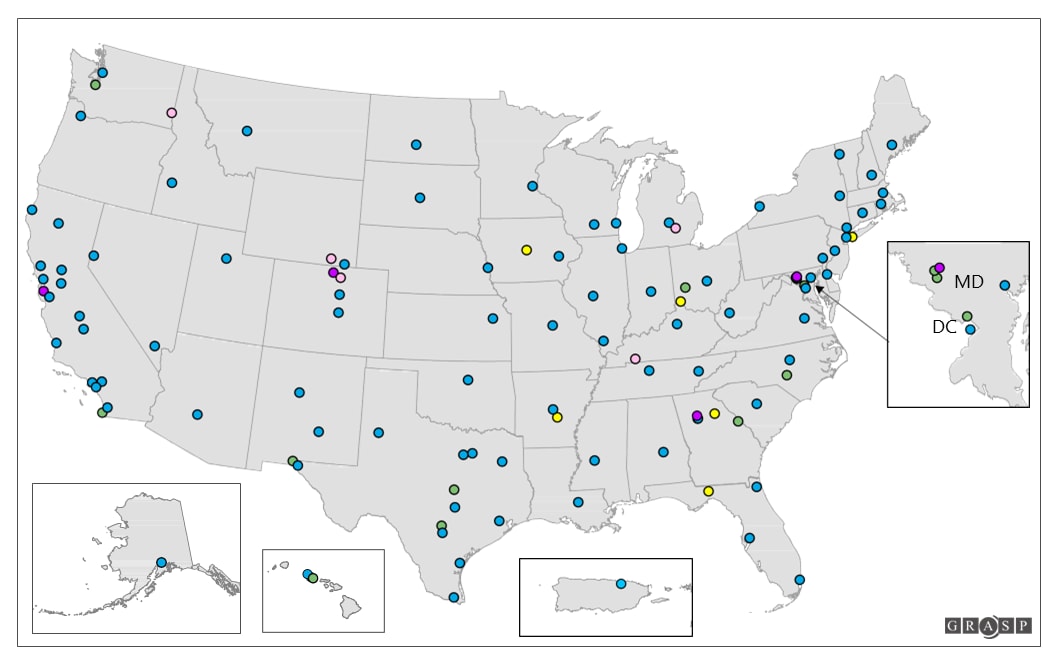At a glance
- Member laboratories of the Laboratory Response Network for biological threats (LRN-B) are strategically located near densely populated areas across the U.S.
- This enables faster response to a local disease outbreak.
- These laboratories can easily transfer samples if it is necessary.
Overview
LRN-B member laboratories are strategically located across the United States and abroad, each playing a role in their state's or territory's overall emergency response plan. They include state and local public health, federal, military labs, each capable of performing confirmatory testing for high priority biological and chemical agents.
Every state has at least one laboratory that is designated as a Biosafety Level 3 (BSL-3) facility. BSL-3 facilities meet strict safety and security guidelines and personnel follow procedures that protect them and their colleagues from inadvertent infection. One of the LRN's goals is to have all of its reference and national laboratories designated as BSL-3, which is the second highest laboratory biosafety designation available.

To promote faster detection of a disease outbreak, LRN facilities are located near densely populated areas. In fact, 84% of the U.S. population is located within a 100-mile radius of an LRN laboratory. This means LRN laboratories are able to respond faster to a local disease outbreak. Laboratories are capable of transferring samples to the nearest appropriate partner laboratory if they cannot perform the required tests or become overwhelmed.
